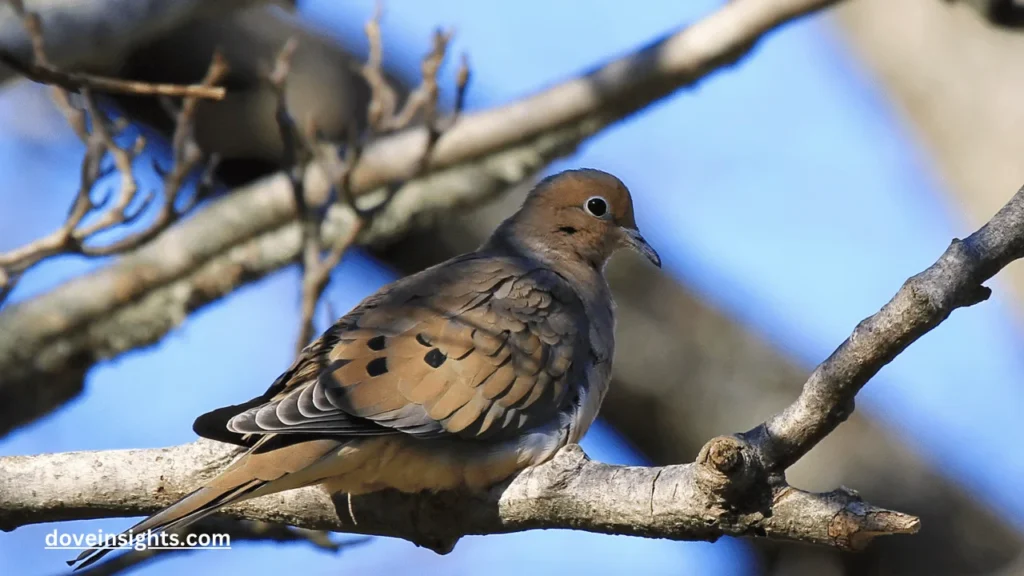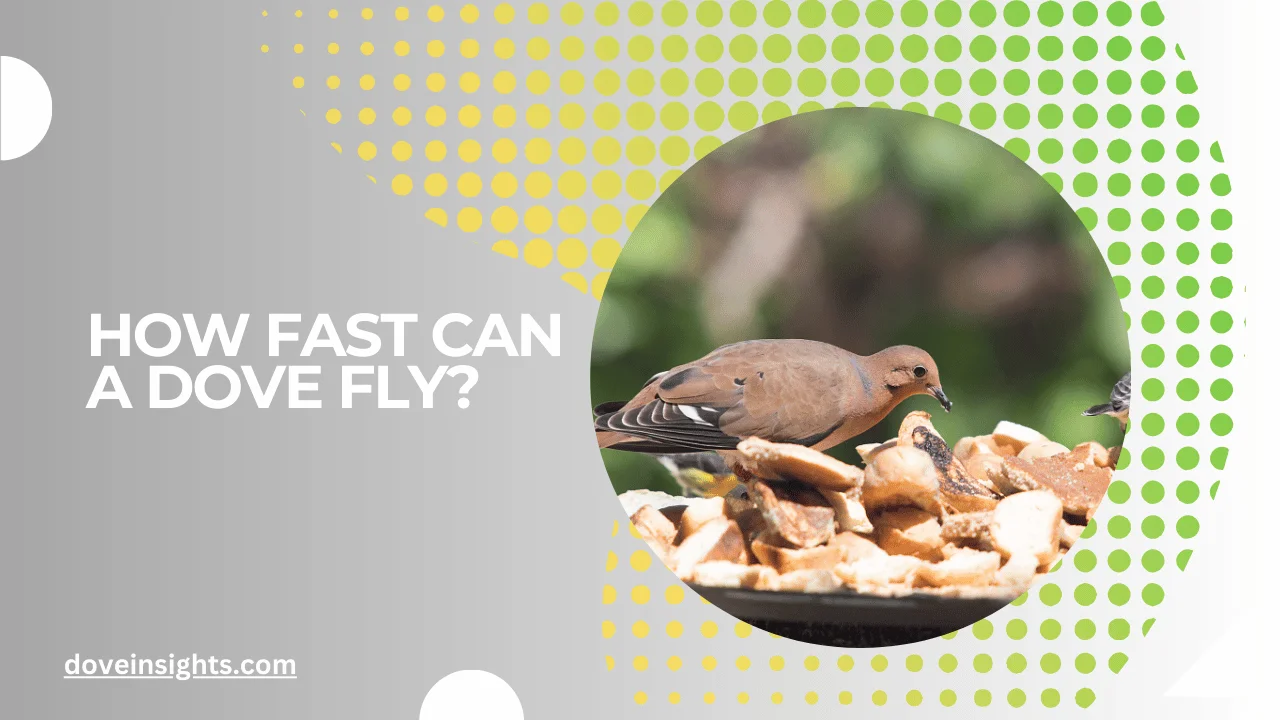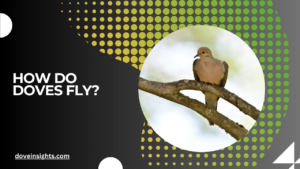With their graceful flight and soothing coos, doves have captured the imagination of bird lovers for centuries. But behind their peaceful demeanor lies a surprising capability: their speed. Have you ever wondered, how fast can a dove really fly?
Whether they are darting away from predators or soaring across open skies, their flight speed plays a crucial role in their survival and daily life.
Doves are not just symbols of peace; they are also fascinating creatures with impressive adaptations for flight. Their speed and agility are products of both evolutionary necessity and anatomical design, allowing them to navigate diverse environments and escape potential threats.
Understanding their flying capabilities offers insights into their behavior, survival strategies, and even their role in ecosystems.
This article dives deep into the fascinating world of dove flight, exploring their speed, the factors that influence it, and how they compare to other birds.
By the end, you’ll not only have a newfound appreciation for these graceful fliers but also a deeper understanding of how their speed shapes their lives.
Contents
The Anatomy Behind a Dove’s Flight
The speed of a dove is intricately tied to its physical characteristics and flight mechanics, which have evolved for efficient flying. One of the most crucial features is the dove’s wing structure.
Doves possess long, pointed wings that help reduce air resistance and allow for efficient, high-speed flight. These wings are designed to cut through the air, making it easier for the bird to travel long distances quickly.
Another vital component is the dove’s muscle power. The pectoral muscles, which make up a significant portion of their body weight, provide the strength needed for rapid takeoffs and sustained flight.
These powerful muscles help them maintain a steady pace during their flights, whether they are escaping predators or searching for food.
Additionally, doves have a streamlined body, which minimizes drag and allows them to reach remarkable speeds. Their lightweight frame enables them to conserve energy while traveling at high velocities.
These adaptations not only allow doves to fly quickly but also help them maneuver skillfully to avoid predators and navigate challenging environments.
How Fast Can Doves Really Fly?
On average, doves are capable of flying at impressive speeds, making them one of the fastest birds of their size. Mourning doves, for example, can reach speeds of 40 to 55 miles per hour, placing them among the fastest fliers in their size category.
Their sleek build and powerful wings help them achieve these speeds, allowing them to cover significant distances when needed.
Rock doves, also known as pigeons, are close relatives of mourning doves and have been clocked at speeds exceeding 60 miles per hour, particularly during racing events.
This makes them even faster than mourning doves, with their enhanced aerodynamic design contributing to their speed.
While doves are not as fast as peregrine falcons, which can dive at speeds over 200 miles per hour, they still outpace many common backyard species, including songbirds.
Their speed is not just about raw power; it’s a vital survival tool that allows them to escape threats and find food efficiently.
Factors That Influence a Dove’s Speed
Several environmental and physiological factors influence a dove’s flight speed. Wind and weather conditions play a significant role. Tailwinds can boost their speed dramatically, allowing them to fly faster and conserve energy.
On the other hand, headwinds or storms can slow them down, forcing them to exert more energy to maintain speed.
The health and fitness of a dove also impact its flying capabilities.
A well-fed, healthy dove will have the energy reserves needed for sustained high-speed flight, while a malnourished or sick bird may struggle to fly as fast or as long.
Lastly, the purpose of flight is crucial. A dove’s speed may vary depending on whether it is fleeing from predators, migrating to a new location, or foraging for food.
These different motivations influence how fast a dove will fly, as they tailor their speed to suit the situation.
Why Speed Matters for Doves
The ability to fly fast is a critical component of a dove’s survival strategy. Predator evasion is one of the most important reasons for their speed. Fast, agile flight helps doves escape predators such as hawks, falcons, and cats.
Their quick takeoffs and swift maneuvers make it difficult for predators to catch them.
Migration is another key reason speed matters. Mourning doves are migratory birds that travel long distances, sometimes hundreds or thousands of miles.
Their speed allows them to cover these distances efficiently, ensuring they can reach their destination without exhausting their energy reserves.
Finally, territorial displays are important during the breeding season. High-speed flights can serve as a display of strength during mating rituals or territorial disputes, signaling to other males that the territory is taken.
Understanding the importance of speed helps us appreciate how these birds thrive in diverse and often hostile environments.
How You Can Observe and Support Dove Flight

If you’re interested in observing doves in flight or supporting their natural behaviors, here are a few tips. First, consider setting up feeding stations in your yard. Doves are attracted to seeds and water, and watching them take off and land can provide a closer look at their flight capabilities.
Protecting their habitat is also essential. Minimize disturbances and maintain safe nesting areas to ensure doves can rest and feed without stress. Providing a calm environment allows them to thrive without fear of predators or human interference.
Participating in birdwatching events is another excellent way to observe doves. Local birdwatching groups often offer opportunities to observe doves and other species in their natural habitats.
By creating a dove-friendly environment, not only do you help these magnificent birds, but you also enhance your appreciation of their remarkable flight abilities.
Conclusion
Recap Main Points: Doves are remarkable fliers, capable of reaching speeds of 40 to 60 miles per hour, depending on the species and conditions. Their anatomy, including long, pointed wings and powerful pectoral muscles, enables them to fly swiftly and efficiently.
Factors such as wind conditions, health, and the purpose of flight can influence their speed, making it adaptable to various situations.
Understanding the reasons behind their speed and why it’s essential for their survival helps us appreciate how well these birds are suited to their environments.
Final Thoughts: Doves are more than just beautiful creatures; their ability to fly fast is a testament to their survival instincts and physical prowess. Whether you are simply admiring their flight or actively supporting their habitat, understanding their speed adds depth to your appreciation of these fascinating birds.
By creating environments that support their needs, we can help them thrive and continue to marvel at their flight for generations to come.
FAQ’s
How fast can a mourning dove fly?
Mourning doves can fly at speeds of 40 to 55 miles per hour, depending on the conditions.
Are rock doves faster than mourning doves?
Yes, rock doves (pigeons) can exceed 60 miles per hour, making them faster than mourning doves.
How do wind conditions affect a dove’s flight speed?
Tailwinds can significantly boost a dove’s speed, while headwinds slow them down.
What role does a dove’s health play in its flight speed?
A healthy dove with sufficient energy reserves can sustain higher flight speeds for longer periods compared to an undernourished or injured one.
Why do doves fly fast?
Doves fly fast primarily to escape predators, migrate, and perform territorial displays during mating season.
Do doves fly faster during migration?
Yes, doves use their speed to cover long distances efficiently during migration.








